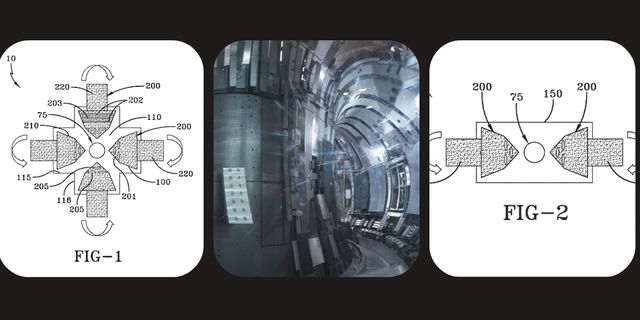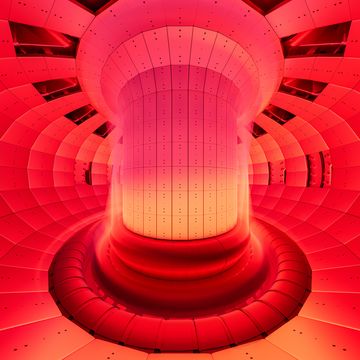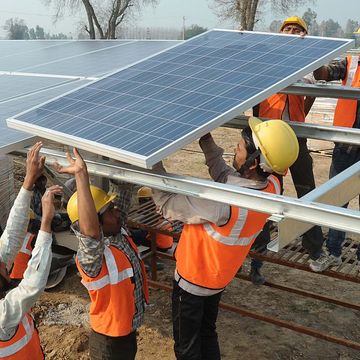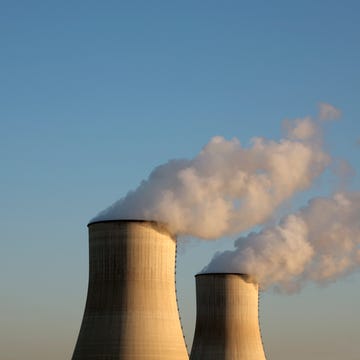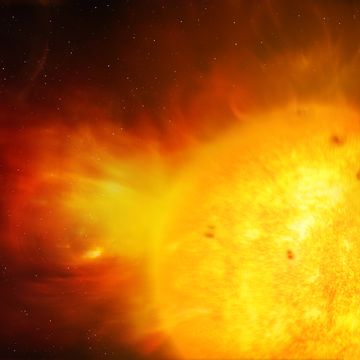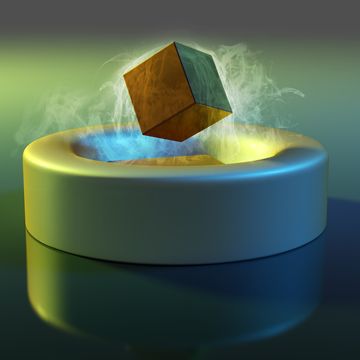- A patent filed by the U.S. Navy last month claims to have developed a compact Nuclear Fusion Reactor.
- Nuclear fusion has been touted as the ultimate energy source, generating enormous amounts of power with little to no harmful byproducts.
- No one has yet been able to mass produce or control large quantities of fusion energy, so designs for the reactor seemingly stretch the limits of science.
Scientists have longed to create the perfect energy source. Ideally, that source would eventually replace greenhouse gas-spewing fossil fuels, power cars, boats, and planes, and send spacecraft to remote parts of the universe. So far, nuclear fusion energy has seemed like the most likely option to help us reach those goals.
The big problem? It’s difficult to harness, and we’re nowhere near producing it at the scales we need in order to cause a seismic shift in energy policy. That's why teams of researchers across the world are racing to improve our understanding of this reaction.
Now, the U.S. Navy has jumped into the game by filing a patent for a compact fusion reactor, according to exclusive reporting by The War Zone.
Developing a viable source of nuclear fusion energy—the same reaction that powers the sun—has long been seemingly unattainable. The patent for the device was reportedly filed on March 22, 2019, and published late last month. This technology, by all accounts, is a long shot. But it would completely revolutionize how we power our world.
In order to create fusion energy on Earth, scientists and engineers must build instruments that can contain gases that will reach temperatures of hundreds of millions of degrees in order to compel atomic nuclei to slam together at high speeds and create a superheated plasma.
But that’s not an easy task, and there a several technical challenges associated with creating fusion energy. For example, the plasma can’t touch the walls of the chamber in which it’s created, so scientists must use powerful magnetic fields to isolate the substance. This is one of the most critical challenges researchers aim to overcome. And then there’s the issue of actually storing the energy that’s created in the reaction. No small feat.
If scientists were able to harness fusion energy, all it would do is completely change the course of humanity. One kilogram of fusion fuel produces the same amount of energy as 10 million kilograms of fossil fuels, according to the Science Museum in London. It’s the perfect energy source; it doesn’t emit greenhouse gases or leave behind harmful byproducts such as nuclear waste—unlike nuclear fission. In fact, its sole byproduct is helium: an inert, extremely useful gas.
Current reactors are approximately the size of a building; a relatively portable compact fusion reactor, one designed to power relatively small vehicles, would be a game-changer. The Chinese government (allegedly), Lockheed Martin, and several other private companies have made inroads in shrinking the technology, and the Navy is hot on their tails. This device, according the The War Zone, could potentially fit on a boat or an aircraft. So, how does the service propose to create such a tiny reactor?
The success of the device, developed by researcher Salvatore Cezar Pais of the Naval Air Warfare Center - Aircraft Division, relies on a part called a dynamic fusor. According to the patent, Pais’ plasma chamber contains several pairs of these dynamic fusors, which rapidly spin and vibrate within the chamber in order to create a “concentrated magnetic energy flux” that can squish the gases together.
Coated with an electrical charge, the cone-shaped fusors pump fuel gases like Deuterium or Deuterium-Xenon into the chamber, which are then put under intense heat and pressure to create the nuclei-fusing reaction. Current technology at reactors around the world use superconductors to create a magnetic field.
The War Zone reports that the device could potentially produce more than a terawatt of energy while only taking in power in the kilowatt to megawatt range. We don’t currently have an energy source that can produce more power than is needed to create it.
We’re getting close, though, according to Seeker. The International Nuclear Fusion Research, a collaborative experiment to build the largest-ever instrument that houses these reactions, called a tokamak, could do this when it boots up in 2025.
Of course, developing the necessary infrastructure to get this energy out of the lab and into our cars and homes is still a long ways away. But we can still dream.
Source: The War Zone
Jennifer Leman is a science journalist and senior features editor at Popular Mechanics, Runner's World, and Bicycling. A graduate of the Science Communication Program at UC Santa Cruz, her work has appeared in The Atlantic, Scientific American, Science News and Nature. Her favorite stories illuminate Earth's many wonders and hazards.
